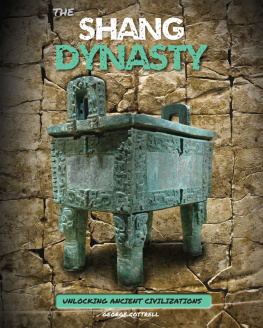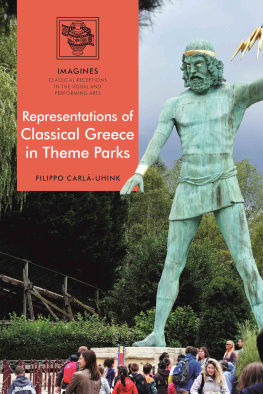Published by
The E. J. W. Gibb Memorial Trust
Trustees: G. van Gelder, R. Gleave, C. Hillenbrand, H. Kennedy,
C. P. Melville, J. E. Montgomery, C. Woodhead
Secretary to the Trustees: P. R. Bligh
The E. J. W. Gibb Memorial Trust and the individual authors 2013
ISBN 978-0-906094-98-3
E-pub ISBN 9780906094792
Mobi ISBN 9780906094846
PDF ISBN 9780906094891
A CIP record for this book is available from the British Library
Further details of the E. J. Gibb Memorial Trust and its publications
are available at the Trusts website
www.gibbtrust.org
Printed in Great Britain by
Short Run Press
Exeter
Contents
Monique Bernards
Travis Zadeh
Emily Selove
Johan Weststeijn
Antonella Ghersetti
Letizia Osti
Joseph E. Lowry
David Bennett
John P. Turner
Ignacio Snchez
Amikam Elad
A Mosaic of Abbsid Studies
Monique Bernards
Twelve years have passed since the School of Abbsid Studies was revived during the autumn of 2000 and ten years have passed since the first of its restored series of biennial conferences was held at Cambridge University in July 2002. That particular conference was a great success, though daunting how could we retain the same high quality of papers, discussions and productive atmosphere for future meetings? In hindsight we can now congratulate ourselves because each and every conference since the first has been a success in its own right. We can safely say that the School has realised its major aim of bringing together scholars who operate in different disciplines but who jointly work towards a holistic contemplation of the Abbsid world. In short, Abbsid Studies continue to boom.
Conferences, even the successful ones, tend to be volatile. This was the main reason behind our decision to also restart the publication of the Occasional Papers of the School of Abbsid Studies series; it is a permanent contribution to the field. This book is the fourth of the new series and it includes a selection of articles presented and discussed at the Schools biennial conference held in Leuven in July 2010. I am genuinely proud to say that Abbsid Studies IV meets the same requirements of quality as set by the previous three volumes. The contributions are very diverse, mirroring the numerous perspectives from which historical, political, cultural and religious aspects of the Abbsid heritage are viewed. Yet all contributions do share something in common, texts, as well as a common approach anchored in philology, the backbone of our discipline.
The Abbsid Studies series first and foremost illustrates that philology is not boring; quite, the opposite, it is exciting. Texts require different and combined skills to obtain meaning and come to life. Manuscripts have been transmitted over and over again before reaching us. They need careful reading, both the lines as well as between the lines and around the text collating, contextualising, using the scholars imagination to capture the culture in which these texts were produced and at every single step from transmission to manuscript to edition decisions have been made and continue to be made, which have lasting effects. The results of this intricate process, the editions, interpretation, analysis, comparison, scepticism, again imagination, are all aimed at answering specific questions about the texts which, in turn, create new contexts for research.
In using texts, some of us try to uncover details, at times minute, to fill in the gaps of the bigger picture, while others seek to create an even bigger picture than the existing one to serve as context. Both approaches of philology are represented, in one way or another, in this mosaic of Abbsid Studies which the reader encounters in this volume. For this is how the book naturally unfolded itself before my eyes as I commenced to read and edit the articles as a colourful mosaic. Small pieces of stone or coloured glass put together form beautiful shapes of bright patterns, some of which merge with one another, overlapping, whereas others stand ostensibly isolated attracting the eyes attention. Imagine the colours and images of a stained glass window coming to life as it catches light from different angles, illuminating an otherwise obscure interior space. We think we know the place inside, but with every slight movement of the sun outside, new, unexpected reflections or silhouettes emerge that tickle our imagination, our curiosity and interest. We see larger pictures unfold before our eyes but we should not forget to focus on the details of colour and miniatures that the mosaic brings forth.
The framework of this mosaic of Abbsid Studies, which holds the bright pieces of glass in place and lends the work its basic complexion, is a tour through the manuscripts, published or not, that provides insight into how the fundamentals of philology are shaped. At the top of the mosaic, wonderful vistas of ancient dreams open up while Abbsid armies clatter and collide at the bottom. Scattered in between and around these scenes are images of murderous caliphs, foreign looking littrateurs and talking objects; puzzling jurists and puzzled philosophers are surrounded by odd abstract figures that stand out due to their extraordinariness. We see a lively self portrait of a scholar struggling with the presentation of his own image. Each and every picture deserves our attention, as we let it work in while trying to grasp its meaning and how it fits within the mosaic as a whole.
Inspired by this image of a mosaic of Abbsid studies, I came to the not quite arbitrary ordering of articles found in this volume. In what follows, I shall shortly introduce each contribution while focussing on the connecting and overlapping patterns of the mosaic.
The ninth Abbsid caliph al-Wthiq (d. 232/847), famous for his intellectual curiosity, sends the Persian courtier Ibn Khurraddhbih (fl. 270/884) on exploratory missions around the globe to obtain eyewitness testimony of the wonders of the world. The accounts of Ibn Khurraddhbihs journeys are collected in what we now know is the earliest descriptive geography written in Arabic, al-Maslik wa-l-mamlik. The way in which the Maslik has obtained its current edited form is the subject of Travis Zadehs adventurous tour through the archives. Tracing the manuscript from its first pre-modern mention in Rome to a first edition and translation (in 1865) of an incomplete version of the text in Paris, which ultimately ended up in the Bodleian, Oxford Zadeh presents a thriller-like account about the search for an additional manuscript eventually found in Alexandria and stored in Vienna to restore the original version of the text and to properly identify its author.
With two manuscripts available, the work towards a critical edition of the Ur-text begins. Zadeh narrates how such a critical edition came into being (notably de Goejes edition in the Bibliotheca Geographorum Arabicum, Leiden 1889). In Of mummies, poets, and water nymphs Zadeh takes us through the wonderful world of Abbsid written high culture. He presents examples reminiscent of Harry Potter stories or Indiana Jones movies from magic pools and all-seeing mirrors, to the kidnapping of a lute-playing shepherd and the bleeding tissues of mummies found in the pyramids of Giza while Orientalist researchers fight each other in an attempt to date events related in Ibn Khurraddhbihs geography and seek to identify the different hands that have contributed to the extant manuscripts of the text.
Zadehs expedition through the archives with its tales of adventure, deceit and confusion clearly shows that the texts modern researchers work with are the products of a large collaborative process that frequently baffles us. Cautiousness and endurance as well as a large dose of imagination are often needed to crack such a text. This is evidently the case for the
Next page











